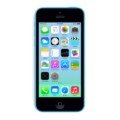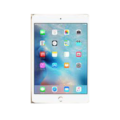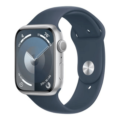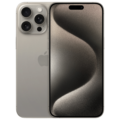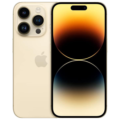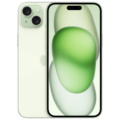- Home
- Apple Devices
- Apple iPad
- Apple iPad Air (2020) full specifications
Apple iPad Air (2020) full specifications
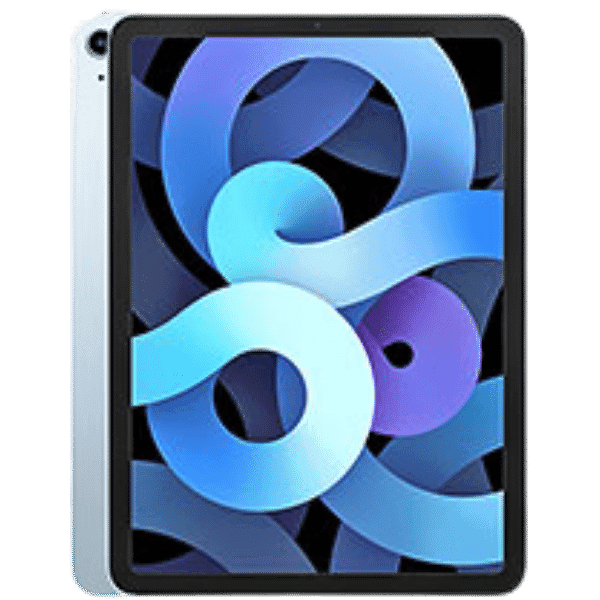
SPECIFICATIONS
General
| Status | Available |
| Announced |
2020, September 15 |
| Released | 18 September, 2025 |
| Model |
A2324, A2072, A2325, A2316, iPad13,1, iPad13,2 |
| Price Apple iPhone Price in USA, UK, Canada, Australia, India, Pakistan, China, Japan and Europe |
USD 696 EUR 640 |
Network
| Technology |
GSM / HSPA / LTE |
| 2G Network |
GSM 850 / 900 / 1800 / 1900 |
| 3G Network |
HSDPA 850 / 900 / 1700(AWS) / 1900 / 2100 |
| 4G Network |
1, 2, 3, 4, 5, 7, 8, 11, 12, 13, 14, 17, 18, 19, 20, 21, 25, 26, 29, 30, 34, 38, 39, 40, 41, 46, 48, 66, 71 - A2324 1, 2, 3, 4, 5, 7, 8, 11, 12, 13, 14, 17, 18, 19, 20, 21, 25, 26, 28, 29, 30, 32, 34, 38, 39, 40, 41, 42, 46, 48, 66 - A2072 |
| Speed | HSPA, LTE (CA) |
| GPRS GPRS (General Packet Radio Service) is a packet oriented mobile data service on the 2G and 3G cellular communication system's global system for mobile communications (GSM), Generally, GPRS is used for the purpose of wireless data transfer, such as sharing pictures and videos or browsing the Internet via a mobile phone connection. | |
| EDGE EDGE (Enhanced Data GSM Environment) is a wireless network technology generally considered the next step in the 2G network offers data transfer rates up to four times faster than ordinary GSM networks, Generally, EDGE is used for the purpose of wireless data transfer, such as sharing pictures and videos or browsing the Internet via a mobile phone connection. |
Body
| Dimensions | 247.6 x 178.5 x 6.1 mm (9.75 x 7.03 x 0.24 in) |
| Weight | 458 g (Wi-Fi) / 460 g (3G/LTE) (1.01 lb) |
| Colors |
Space Gray, Silver, Rose Gold, Green, Sky Blue |
| SIM SIM (Subscriber Identity Module) is a small card that contains mobile network subscriber's account information. This allows the phone using the card to attach to a mobile network. The SIM card is most commonly associated with GSM and UMTS mobile networks. Moving a SIM card from one phone to another allows a subscriber to switch mobile phones without having to contact their mobile network carrier. SIM cards can also be used by a phone to store limited amounts of data, such as phone numbers and text messages. |
Nano-SIM and eSIM |
| Build | Glass front, aluminum back, aluminum frame |
Display
| Display Type Display Technology => A number of display technologies and types used in mobile phones => TFT (Thin Film Transistor), IPS (In-Place Switching), OLED (Organic Light Emitting Diode), AMOLED (Active-Matrix Organic Light-Emitting Diode), Super AMOLED (an even advanced version of AMOLED), Resistive Touchscreen (Resistive touchscreens contain two layer of conductive material with a very small gap between them which acts as a resistance), Capacitive Touchsceen (Capacitive touchscreen technology consists of a layer of glass coated with a transparent conductor) | Liquid Retina IPS LCD, 500 nits (typ) |
| Size | 10.9 inches, 359.2 cm2 (~81.3% screen-to-body ratio) |
| Resolution | 1640 x 2360 pixels |
| Pixel Density Pixel Density (PPI) is refers to the concentration of pixels on a particular display, measured in pixels per inch (ppi). Pixel density is calculated by dividing the diagonal pixel resolution of a display by its diagonal size, higher pixel density better display quality. | (~264 ppi density) |
| Touch Screen | Haptic Touch |
| Display Protection Display Protection => Gorilla Glass is a special alkali-aluminosilicate glass shield with exceptional damage resistance that helps protect mobile displays from scratches, drops, and bumps of everyday use, It is always better to go for a smartphone with Gorilla Glass for that added protection and peace of mind. | Scratch-resistant glass, oleophobic coating |
| Multitouch |
Camera
| Primary Camera is able to capture photographs and usually videos, The most important characteristics of a camera are the resolution (measured in megapixels), lens focus type (fixed or automatic), higher megapixel cameras are known to capture higher quality photos, but not always a good measurement of the photos quality. |
12 MP, f/1.8, (wide), 1/3", 1.22µm, dual pixel PDAF |
| Video | 1080p@30/60fps |
| Camera Features | HDR |
| Selfie Camera |
7 MP, f/2.0, 31mm (standard) |
| Video | 1080p@30/60fps |
| Camera Features | HDR |
Hardware
| Chipset Chipset is a group of integrated circuits designed to perform one or a more dedicated functions, often with real time computing constraints, Popular smartphones are equipped with more advanced embedded chipsets that can do many different tasks depending on their programming. | Apple A14 Bionic (5 nm) |
| CPU CPU (Central Processing Unit) mostly known as processors, CPU processes instructions in order to carry out certain functions that make your device operate properly. Processors are often described as the brain of computers, smartphones and tablets, Smartphones and tablets rely on processors to carry out their every task, Processors are an incredibly important factor in selecting any type of computing device, including your smartphone. | Hexa-core (2x3.0 GHz Firestorm + 4x1.8 GHz Icestorm) |
| GPU GPU (Graphics Processing Unit) is a single-chip processor designed to rapidly manipulate and alter memory to accelerate the creation of images in a frame buffer intended for output to a display, This includes things such as lighting effects, object transformations, and 3D motion. | Apple GPU (4-core graphics) |
| RAM (Memory) RAM (Random Access Memory) is a type of computer memory that can be accessed randomly, any byte of memory can be accessed without touching the preceding bytes that allows information to be stored and accessed quickly from random locations. RAM is the most common type of memory found in computer systems, smartphones, tablets and other electronic devices. | 4 GB |
| Internal Storage Internal Storage is a data storage space (flash memory) mostly used in smartphones, tablets and other electronic devices where operating system, apps, music, photos, videos, files and other user data Is stored. | 64GB/256GB |
| Card Slot Memory Card Slot is a special slot for inserting a memory card. Memory cards allow you to expand the phone's built-in memory, A memory card (sometimes called a flash memory card or a storage card) is a small storage medium used to store data such as text, pictures, audio, and video, for use on small, portable or remote computing devices such as mobile phones, mp3 players, digital cameras. | No |
| Sensors Sensors are electronic components that detects and responds to some type of input from the physical environment. The specific input could be light, heat, motion, moisture, pressure and location, The output is generally a signal that is converted to use in computing systems, a location sensor, such as a GPS receiver is able to detect current location of your electronic device. |
Fingerprint (top-mounted), compass, accelerometer, gyro, barometer |
Software
| Operating System OS => Every computer system run on a base software called Operating System (OS). Operating System controls all basic operations of the computer (such as smartphone, PDAs, tablet computers and other handheld devices). The Operating System allows the user to install and run third party applications (apps), apps are used to add new functionality to the device. | iPadOS 14.1, upgradable to iPadOS 17.4 |
| Browser (Default) | Safari |
Media
| Loudspeaker | Yes, with stereo speakers |
| 3.5mm Jack | |
| FM Radio | No |
Connectivity
| Bluetooth Bluetooth is a wireless communications technology for exchanging data between mobile phones, headsets, computers and other network devices over short distances without wires, Bluetooth technology was primarily designed to support simple wireless networking of personal consumer devices. | 5.0, A2DP, EDR |
| Infrared Infrared connectivity is an old wireless technology used to connect two electronic devices. It uses a beam of infrared light to transmit information and so requires direct line of sight and operates only at close range. | |
| Wi-fi Wi-Fi is a popular wireless networking technology using radio waves to provide high-speed network connections that allows devices to communicate without cords or cables, Wi-Fi is increasingly becoming the preferred mode of internet connectivity all over the world. | 802.11 a/b/g/n, dual-band |
| Wi-fi Hotspot | |
| USB | Lightning, USB 3.0; magnetic connector |
| GPS GPS The Global Positioning System is a satellite-based radio navigation system, GPS permits users to determine their position, velocity and the time 24 hours a day, in all weather, anywhere in the world, In order to locate your position, your device or GPS receiver must have a clear view of the sky. | GPS, GLONASS (LTE model only) |
| NFC NFC (Near field communication) is a set of standards for smartphones and similar devices to establish peer-to-peer radio communications with each other by touching them together or bringing them into proximity, usually no more than a few inches. |
Battery
| Battery Type Battery Type => Cell phones run on various kinds of batteries depending on the manufacturer, phone size or shape and features. There are basically four types of cell phone batteries => Lithium Polymer, Lithium Ion, Nickel Metal Hydride and Nickel Cadmium. | Li-Po |
| Capacity Battery Capacity is a measure (typically in Amp-hr) of the charge stored by the battery, and is determined by the mass of active material contained in the battery. The battery capacity represents the maximum amount of energy that can be extracted from the battery under certain conditions. | 7606 mAh (28.93 Wh) |
| Placement | Non-removable |
MISC
Description
The Apple iPad Air (2020) spec, the iPad Air 4, redefined what a mid-range tablet could offer, combining powerful hardware with a sleek design. Released on October 23, 2020, the iPad Air (4th generation) continues to impress with its versatile features and exceptional performance. In this detailed review, we explore its design, display, performance, cameras, battery life, and key specifications to help you determine whether it’s the right device for you.
Table of Contents
Design and Display: Modern and Sleek

The iPad Air (4th Generation) features a significant redesign compared to its predecessors. It takes on a more modern look similar to the iPad Pro, with slim bezels and a large 10.9-inch Liquid Retina display. The display boasts a resolution of 2360 x 1640 pixels at 264 PPI (pixels per inch), offering bright, sharp, and vivid visuals.
One of the best features is the True Tone technology, which adjusts the display’s color temperature based on background lighting conditions. This results in a more comfortable viewing experience, especially during extended use.
Measuring 247.6 x 178.5 x 6.1 mm and weighing 458 grams (Wi-Fi model) or 460 grams (Wi-Fi + Cellular model), the iPad Air (4th Gen) is sleek and lightweight. The design removes the Home button, including Touch ID, from the top button, which adds to the streamlined elegance.
Performance: Powered by A14 Bionic

At the heart of the iPad Air (2020) spec is the powerful Apple A14 Bionic chip, built on a 5 nm process. This chip features a hexa-core CPU with a combination of high-performance and energy-efficient cores coupled with a 4-core GPU. The iPad Air includes 4GB of RAM and offers two storage options—64GB and 256GB.
While the lack of expandable storage may be limiting for some users, the A14 Bionic chip delivers top-tier performance, making the device capable of handling demanding tasks such as gaming, multitasking, and 4K video editing. It also excels in augmented reality applications and remains future-proof for years to come.
Software and iPadOS Integration
The iPad Air (2020) spec ships with iPadOS 14.1 and is upgradeable to iPadOS 18.2.1. The operating system enhances the tablet experience with features tailored for productivity and creativity. Tools such as Scribble allow users to convert handwritten notes into text seamlessly, while Split View and Slide Over facilitate multitasking by enabling multiple apps to run simultaneously.
The App Store further expands the device’s versatility with a vast selection of apps optimized for the iPad, catering to diverse user needs.
Camera Quality and Features

Although tablets are not primarily designed for photography, the iPad Air (2020) delivers respectable camera performance. The rear camera is equipped with a 12 MP sensor featuring an f/1.8 aperture, HDR capabilities, and dual-pixel phase detection autofocus. It supports video recording at up to 4K resolution at 24/30/60fps, as well as 1080p video at various frame rates with gyro-EIS for stabilized footage.
The front-facing 7 MP camera, with an f/2.0 aperture and HDR support, is ideal for selfies and video calls. It records videos in 1080p resolution at 30/60fps, ensuring clear and sharp visuals for virtual meetings and social media.
Battery Life and Charging
The iPad Air (2020) spec is equipped with a 7606 mAh (28.93 Wh) Li-Ion battery that provides excellent endurance. Apple claims that the device can deliver up to 10 hours of web browsing or video playback on a single charge.
The USB Type-C port supports faster charging than its predecessors, making it convenient for users on the go. Additionally, the USB Type-C connector enhances the device’s versatility, allowing users to connect external peripherals such as storage devices and displays.
Connectivity Options
The iPad Air (2020) spec offers robust connectivity options to suit various needs. It supports Wi-Fi 6 (802.11 a/b/g/n/ac) for fast wireless connections and Bluetooth 5.0 for seamless pairing with accessories. The cellular model includes LTE connectivity along with GPS and GLONASS for navigation. Although it lacks NFC and a 3.5mm headphone jack, the USB Type-C port and magnetic connector for the Apple Pencil add to its functionality.
Pricing and Models
The iPad Air (2020) is available in multiple configurations, including the Wi-Fi-only model (A2316) and the Wi-Fi + Cellular models (A2324, A2072, and A2325). The starting price is approximately €640, with the final cost varying based on storage capacity and region. While the base model with 64GB storage may feel limited for heavy users, the 256GB variant provides ample space for most needs.
Final Verdict
The Apple iPad Air (2020) spec is an exceptional tablet that strikes a balance between performance, portability, and value. With its powerful A14 Bionic chip, stunning display, and premium build quality, it caters to students, professionals, and creatives seeking a versatile device.
Although it lacks certain high-end features, such as ProMotion technology, its overall performance and affordability make it one of the best tablets in its category.
